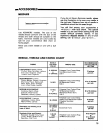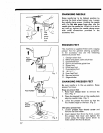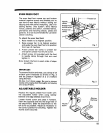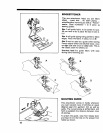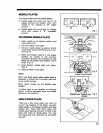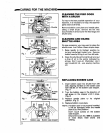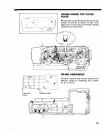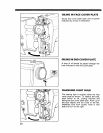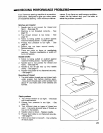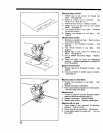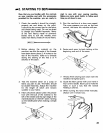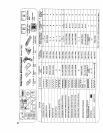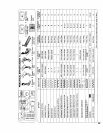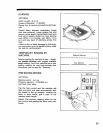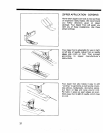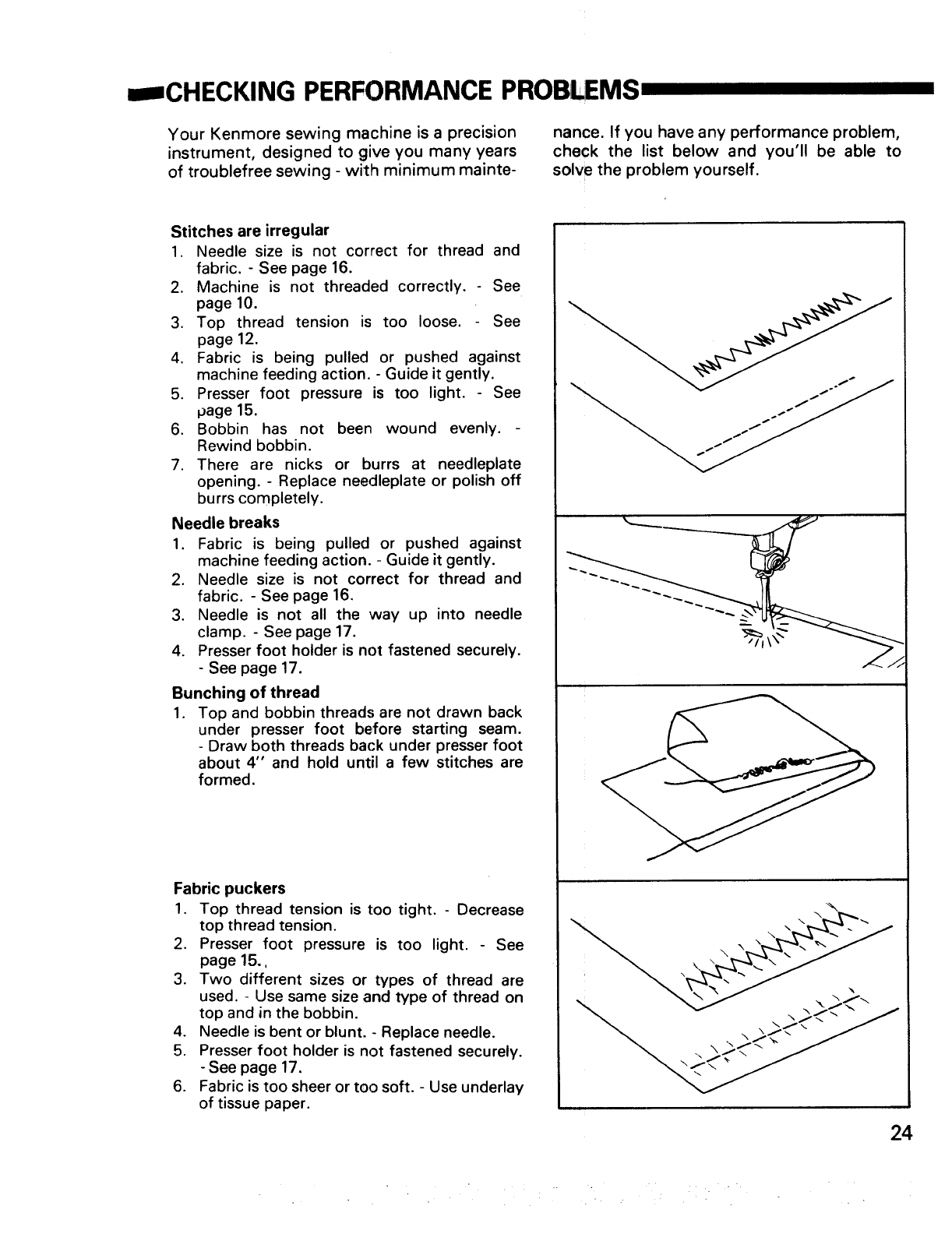
CHECKING PERFORMANCE PROBLEMS
Your Kenmore sewing machine is a precision
instrument, designed to give you many years
of troublefree sewing - with minimum mainte-
nance. If you have any performance problem,
check the list below and you'll be able to
solve the problem yourself.
Stitches are irregular
1. Needle size is not correct for thread and
fabric. - See page 16.
2. Machine is not threaded correctly. - See
page 10.
3. Top thread tension is too loose. See
page 12.
4. Fabric is being pulled or pushed against
machine feeding action. - Guide it gently.
5. Presser foot pressure is too light. - See
page 15.
6. Bobbin has not beent wound evenly.
Rewind bobbin.
7. There are nicks or burrs at needleplate
opening. - Replace needleplate or polish off
burrs completely.
Needle breaks
1. Fabric is being pulled or pushed against
machine feeding action. - Guide it gently.
2. Needle size is not correct for thread and
fabric. - See page 16.
3. Needle is not all the 'way up into needle
clamp. - See page 17.
4. Presser foot holder is not fastened securely.
- See page 17.
Bunching of thread
1. Top and bobbin threads are not drawn back
under presser foot before starting seam.
- Draw both threads back under presser foot
about 4" and hold until a few stitches are
formed.
Fabric puckers
1. Top thread tension is too tight. - Decrease
top thread tension.
2. Presser foot pressure is too light. - See
page 15.,
3. Two different sizes or types of thread are
used. - Use same size and type of thread on
top and in the bobbin.
4. Needle is bent or blunt. - Replace needle.
5. Presser foot holder is not fastened securely.
- See page 17.
6. Fabric istoo sheer or too soft. - Use underlay
of tissue paper.
•,'/i \\ \
\
\
24



